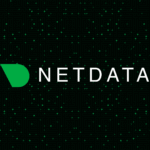Tools for System Administrators
Software

AutoHotkey isn’t something you adopt company-wide. It’s something you keep in your toolbox. Quiet, fast, and weirdly indispensable once you’ve made two or three scripts that actually save time. Nobody talks about it much — but those who use it never really stop.

GitHub Actions won’t replace every CI system out there — and it’s not trying to. But for code that already lives on GitHub, it’s one of the lowest-friction ways to get repeatable workflows running early. Especially when you’re tired of doing the same things over and over again after every push.

Rundeck CE isn’t trying to run your infrastructure. It’s trying to take the repeat out of repeatable operations. If you’ve ever said “just run the script, it’s on server X in folder Y” — this tool can save you that sentence. And probably a few Slack pings too.

UrBackup isn’t fancy, but it works. If you’re looking for a solid, self-hosted backup tool that handles both files and full systems — across platforms — it deserves a spot on your shortlist. Set it up once, check the dashboard now and then, and know your data isn’t flying off to some cloud. It’s sitting where you told it to, versioned, deduplicated, and ready to restore when you need it.

There are plenty of flashy backup tools. This one isn’t flashy — it’s quiet, sharp, and does the job. If you like to know where your data is, how it’s stored, and don’t want to rely on someone else’s infrastructure, Vorta + Borg is worth setting up. It doesn’t talk much. But when something breaks and you need your files back — it usually has them.

Zimbra OSE is for teams that want enterprise-grade mail and groupware without the vendor pricing. It’s a “set it up and let it run” kind of tool, and once dialed in, it serves users well. You’ll need to babysit it now and then, but it gives you freedom — and a whole stack — in one place.

Altap Salamander stays in use not because it looks good — but because it works. It solves file-level problems quickly, handles remote transfers without surprises, and fits into places where other tools either crash, hang, or overcomplicate things. For engineers who still deal with mapped drives, outdated shares, or no-frills environments, this is the kind of utility that earns its place through reliability, not marketing.

Far Manager isn’t trying to be sleek or beginner-friendly. It’s a console interface for people who want their file ops fast, repeatable, and close to the system core. When Explorer fails to start, or when the GUI just adds latency, this thing is already open. And still waiting for input.

WinSCP is the kind of utility that rarely gets mentioned — until it’s missing. Then it’s installed, configured in under a minute, and left quietly doing its job in the background. It doesn’t overpromise, doesn’t break often, and doesn’t ask for attention. In environments where fast, predictable file transfer still matters — and it often does — this tool remains a solid, trusted option.
Double Commander isn’t about innovation — it’s about stability. It keeps showing up in toolkits because it solves problems without trying to be clever. When a container mounts read-only, a backup folder needs trimming, or a tarball has to be opened on a remote box with no GUI — this is what gets launched. No fluff, no setup, no surprises.

Checkmk Raw isn’t trying to reinvent monitoring. It’s trying to do it well — even if that means being a little old-school.

Unicornscan isn’t here to replace Nmap. It follows a different path. It’s made for those moments when you need output — fast, at scale, and preferably without setting off alarms. It’s not something you’d use daily, but when you do need it, nothing else works quite the same.

Nmap on its own is a staple. Zenmap doesn’t replace it — it complements it. Together, they give you fast, flexible, and shareable network visibility without needing a full-blown vulnerability scanner. Whether you’re troubleshooting, auditing, or just curious, this pair shows you what’s really out there — one open port at a time.

AnyDesk isn’t perfect. But when you need to connect now — not in five minutes, not after configuring ssh tunnels — it usually works. That’s why a lot of sysadmins and support folks keep it around. Not because it’s fancy. Because it gets them back into the system before the call even finishes.

DWService is one of those tools that quietly solves a real-world problem. It won’t replace your enterprise remote desktop setup, and it’s not built for full-blown support desks. But when you just need access — quick, reliable, cross-platform — it does the job without getting in your way. Sometimes, simple wins.

RustDesk is what happens when remote access is built with developers and sysadmins in mind — not sales teams. No ads, no forced upgrades, no cloud dependency unless you want it. Just a clean, capable tool that does its job and stays quiet. If your organization prefers keeping control over infrastructure and values speed over branding, RustDesk is worth a serious look.

Security Onion isn’t designed for dashboards that make managers happy — it’s built for engineers who want real data and repeatable answers. If you’ve ever tried piecing together network logs by hand, this platform might feel like fresh air. It doesn’t hide the mess — it makes it visible, and that’s where real defense starts.

ClamWin isn’t for frontline defense. But for admins, testers, or anyone who occasionally needs to check a system without dealing with bloated AV suites — it’s a solid option. Free, quiet, and predictable. And when all you want is to scan a file and move on, that’s exactly what matters.

KVM + Cockpit doesn’t pretend to be Proxmox or vSphere. And that’s the point. If all you want is a fast way to manage a few VMs on a box you already trust, this pair keeps it lean, clear, and predictable. Solid for labs, edge systems, internal services — or just any time you want virtual machines that don’t come with a control panel tax.

Portainer CE isn’t flashy. It’s not trying to be. What it does is fill a real gap — making container workloads manageable for the people who actually have to keep them running. When there’s not enough time to explain where the logs are, or how to restart that one container — Portainer helps.

Proxmox VE doesn’t try to be everything. But for what it does — efficient, local virtualization with sane defaults and strong tooling — it’s hard to beat. If you’ve got the hardware and want control without the usual pain, this is one of the rare platforms that lets you just build.

Harvester isn’t pretending to replace your VMware cluster overnight. But if you’re standing up your own infra, want containers and VMs in the same place, and don’t feel like choosing between Proxmox and K8s — this is a clean middle path. Especially for edge and small datacenter use, it’s more mature than you’d expect.













